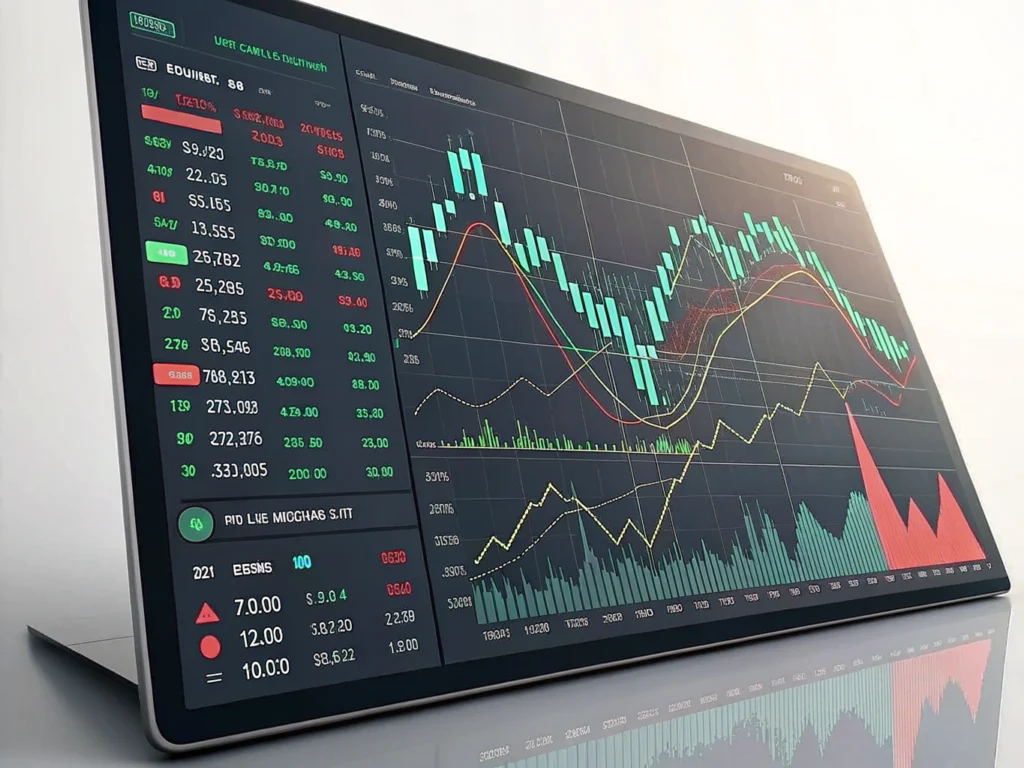
Understanding the DAX 40 Index
The DAX 40 tracks the performance of Germany’s largest blue-chip companies listed on the Frankfurt Stock Exchange. Its constituents span sectors from automotive to pharmaceuticals, making it a barometer for both domestic and global sentiment.
What Is the DAX 40?
The DAX 40 (formerly DAX 30) measures the market capitalization–weighted performance of forty leading firms. It replaced the 30-component format in 2021 to improve sector representation.
How the DAX Is Calculated
- Market-Cap Weighting: Each company’s weight equals its free-float market capitalization divided by the total of all constituents.
- Price Adjustment: Intraday price changes are reflected in real time, with dividends and corporate actions factored in via a total-return index.
Key DAX Constituents
| Company | Sector | Weight (%) (approx.) |
| SAP SE | Technology | 10 |
| Siemens AG | Industrials | 8 |
| Allianz SE | Financials | 7 |
| Volkswagen AG | Consumer Discretionary | 6 |
| BASF SE | Materials | 5 |
How to Trade the DAX
Multiple instruments let you express views on the DAX’s direction, each with distinct risk-return profiles.
DAX CFDs
Contracts for difference enable leveraged exposure with minimal capital outlay. Profits or losses mirror index moves, but financing costs apply for overnight positions.
DAX Futures and Options
- Futures: Standardized contracts with fixed expiration dates, ideal for directional bets or hedges.
- Options: Call and put options offer asymmetric payoffs; you can define risk with a premium known upfront.
DAX ETFs and ETNs
Exchange-traded funds and notes replicate the index performance without margin requirements. They suit buy-and-hold investors seeking broad exposure.
Buying Individual DAX Stocks
Selecting top-weight firms allows targeted sector bets. Combine stocks with index derivatives to fine-tune exposure and hedge specific risks.
Getting Started with DAX Trading
Before placing your first order, set up the right infrastructure and know the market rhythms.
Opening a Trading Account
Choose a regulated broker offering DAX products, competitive spreads, and a reliable platform. Verify account minimums and margin rules.
Placing Your First DAX Position
- Define your view: Bullish or bearish?
- Select instrument: CFD, future, ETF, or stock.
- Calculate position size: Based on risk tolerance and margin requirements.
- Execute order: Market or limit, depending on urgency and price target.
Trading Hours and Sessions
- Core Hours: 9:00–17:30 CET aligns with Frankfurt’s liquidity peak.
- Extended: Some brokers offer overnight CFD trading, but beware of wider spreads and lower volume.
Essential DAX Trading Strategies
A diverse toolkit helps adapt to changing market phases.
Trend-Following Techniques
Employ moving averages or breakout filters to capture sustained momentum. Historical data suggests these methods excel when volatility is moderate.
Range-Trading Approaches
Identify support and resistance zones on oscillators like RSI. Buyers and sellers often tussle within well-defined price corridors.
Event-Driven Tactics
Target economic releases—such as German PMI or ECB policy statements—that frequently trigger sharp index moves. Use straddles or CFDs to play anticipated swings.
Factors That Move the DAX
Recognizing catalysts can give you an edge in timing entries and exits.
Macroeconomic Data Releases
German ZEW sentiment, Ifo business climate, and Eurozone CPI figures directly influence investor optimism.
Currency Fluctuations
The euro’s strength affects export-oriented sectors. Rapid EUR/USD shifts often coincide with index volatility.
Corporate Earnings
Quarterly results from heavyweights (e.g., Siemens, BMW) can sway overall index performance, especially if they surprise consensus estimates.
Political and Geopolitical Events
Elections in Germany or broader EU policy decisions (e.g., fiscal stimulus) often spark directional bets in the DAX.
Risk Management in DAX Trading
Proper controls safeguard your capital during inevitable setbacks.
Stop-Loss and Take-Profit Placement
Anchoring orders to technical levels—such as prior swing highs or ATR-based bands—can automate discipline and remove emotion.
Position-Sizing Methods
Limit exposure per trade to a fixed percentage of your account (e.g., 1–2%). This ensures no single loss derails your portfolio.
Diversification Techniques
Combine DAX positions with uncorrelated markets (e.g., commodities, bonds) to smooth out equity-specific drawdowns.
Tools and Resources for DAX Traders
Leveraging the right platforms and information feeds can streamline decision-making.
Charting Platforms & Technical Indicators
MetaTrader, TradingView, or proprietary broker software support overlays like Bollinger Bands, Fibonacci retracements, and Ichimoku clouds.
News Feeds & Economic Calendars
Integrate Reuters or Bloomberg snippets and schedule alerts for key macro events directly on your desktop or mobile.
Backtesting and Simulation Software
Tools such as NinjaTrader or Amibroker allow you to validate strategies against historical DAX data before risking real capital.
FAQs
What Does DAX Stand For?
“Deutscher Aktienindex,” which translates to “German stock index.”
What Is the Germany 40?
An alternative name for the DAX 40, emphasizing its forty constituent companies.
When Are the Best Times to Trade?
Liquidity peaks during Frankfurt hours (9:00–17:30 CET) and overlaps with London (8:00–16:30 GMT). Volatility tends to rise around major news releases.
How to Interpret DAX Price Swings?
Large up-moves on strong volume suggest commitment from institutional buyers; sharp reversals near technical inflection points often indicate profit-taking.
Conclusion: Trading the DAX with Confidence
Success hinges on understanding index mechanics, selecting the right instruments, and applying disciplined risk controls. By combining well-tested strategies, timely market insights, and robust tools, you can navigate the DAX’s unique dynamics—and capitalize on opportunities in Europe’s premier benchmark.

